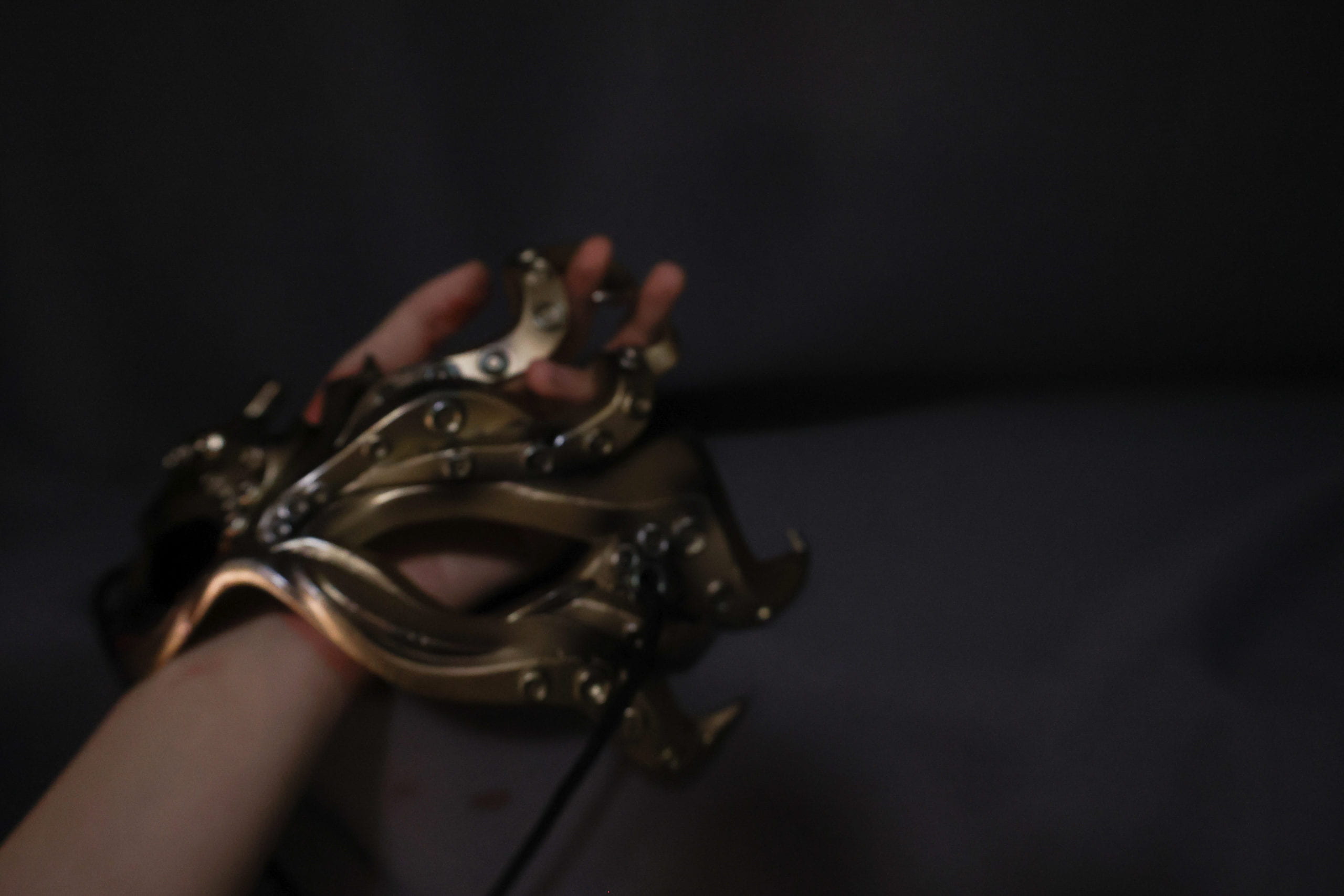A. Artist’s Name, Name of Project
Skyler Liu, Call of Cthulhu
B. Concept
I want to present the attraction of something evil through this diptych. The first image is a mask lying on the platform; it seems to wait for someone to pick it up, then, in the second picture, we see a hand holding the mask, with tears of blood falling from the corner of the mask’s right eye, and there’s is a kind of reality distortion and illusions occurring, which seems to rise a call to another world. My inspiration was from the mask I have which is in relation to the Cthulhu mythos written by Lovecraft. In the mythos, Cthulhu is one of the “great old ones”, which is waiting to arrive on the earth and dominate the world by attracting enough followers.
C. Process
1). Describe your process in staging and photographing part I.
I want to have a dark atmosphere and give the audience an oppressing sensation, so I used a high shutter speed of 1/800, however, I didn’t notice the exposure was improper, which made me have to manipulate the image’s luminance after when I saw the actual effect was too dark on my laptop. I used my dark grey curtain as the background, putting the mask on the platform of the bay window. To express the attraction’s evilness, I designed the element of the tears of blood from the mask, which was made with watercolor paint (I mixed multiple kinds of red colors to make it more like blood). Because I needed to spare one hand to complete the scene of one hand reaching to the mask, I had to operate the camera with a single hand. It made the work much harder for me. For several steps, I had to shoot several times to reach a satisfying effect.
2). Describe your digital process in creating part II image.
I selected the hand holding the mask from picture one, then pasted it to fill picture two’s background to create a sense of illusion. In the beginning, I didn’t know how to select the part I want accurately, thanks to Iris’ and Leon’s help, I did it in the end. I also added a half-transparent blue square with the liquified effect on the corresponding part of the background to create a sense of reality distorted by another world.



D. Conclusion
If I had more time I would absolutely add more details to the collaged image. It was a regret for me because I didn’t have time to optimize the background to look more like an illusion. Also, next time I’ll start with the proper ISO to make the original images have enough luminance.
E. Image of Diptych

The picture with original quality can be found here.
